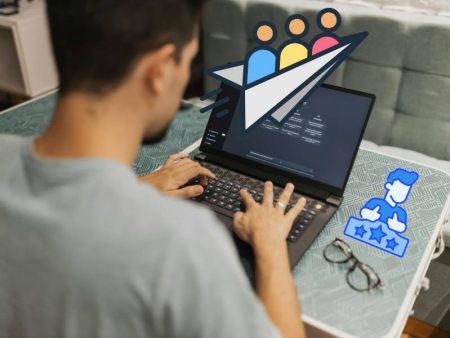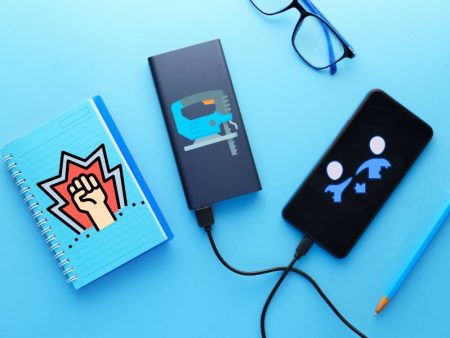Imagine this: you’re sprawled on the couch, scrolling TikTok, and you see an AI tool generate dozens of slick logos, posters, and social media graphics — all in seconds. It hits fast. You double-tap and think: Will designer jobs even exist in ten years?
That question isn’t far-fetched. AI tools are increasingly proficient at churning out polished visuals. They can emulate styles, follow design rules, even match brand colors. But let’s be real — replacing skilled designers? That’s a whole different conversation. Stick around, and let’s break this down with honesty, humor, and yes… a touch of designer empathy.
The Conversation: Human vs. Machine
Here’s how a typical exchange goes:
Me: “Hey AI, create a minimalist logo for a vegan bakery called Leaf & Loaf.”
AI: Generates five sleek, leaf-inspired logo variations in less than 10 seconds.
Me: Stares at screen “Cool… but none look like us. They don’t vibe with our story.”
Me: “Add texture, hand-drawn feel, pastel yellow.”
AI: Reworks options based on tweak
Me: “Closer. I love the yellow but the font doesn’t feel handwritten enough.”
⚠️ That’s when I hit pause. I could refine the prompt more; I could even use the AI output as a starting point—but the tool alone didn’t get us. Context matters. Brand nuance matters. Soul matters.
Historical Patterns: Could AI Really Replace Designers?
Remember when stock photos took over commissioned shoots? Or templates in Word took over custom layouts? Designers pushed back—and we adapted. The CGI era changed visual production, but creatives leaned into storytelling, complex narrative design, and niche aesthetics.
AI isn’t the first wave. It’s the next wave. And in every era, designers who evolve keep thriving.
What AI Does Well
- Speed & Volume: Need 30 Instagram carousel images? Done in minutes.
- Consistency in Templates: It can follow brand color codes, spacing rules, layout frameworks — reliably.
- Access for Non-Designers: It democratizes basic design output — empowering small businesses, solopreneurs, educators.
In short: AI is a workhorse. It’s fast, cost-effective, and accessible.
Where AI Still Falls Short
- Understanding brand nuance: AI can mimic tone but misses that deep emotional core designers craft through conversations, insight, iteration.
- Creative exploration: Humans jump sideways: “What if we made this vintage-time travel?” AI stays on its path unless prompted hard.
- Ethical judgment: Ever seen an AI accidentally re-use someone else’s recognizable style unfairly? It lacks subtle moral compass and accountability.
That context, that empathy, that messy creativity — that’s still authentically human.
x
Yes, that placeholder above is intentional. It mirrors the fact that rightful credit, deep insight, and soulful artistry often come from conversations — not code-based prompts.
The Non-Linear Design Narrative
Let me pull you into a 2019 memory. I was redesigning a health app, focusing on patients with chronic pain. The stakeholders demanded “clean and minimal.” I used AI to build early prototypes — clean layouts, calm pastel tones. But:
- Users in focus groups said the visuals felt sterile.
- Data showed engagement dipped on calm but passive pages.
- We pivoted: richer illustrations, hand-drawn icons, empathy-first copy.
Could AI have led that pivot? Not without deep listening, real conversation. Designers made the shift.
Designers + AI = 🔥
The real opportunity? Collaboration. A creative jam session:
- AI generates 10 logo directions in 2 minutes.
- Designers choose 3, mix-and-match elements, refine typography, adjust kerning for optical perfection.
- Level up. Add brand story integration, custom brand voice, unique photography frames.
That’s not “AI replacement,” that’s “AI amplification.”
x
Again — a tiny reminder: sometimes, just sometimes, words alone don’t explain design value. The journey matters.
The Role of Emotional Nuance
A graphic designer’s job often involves decoding unspoken values:
- When a non-profit wants to feel “warm and inclusive,” that callback comes not from code prompts but from conversations, empathy, even tears.
- When a startup wants edgy sci-fi branding that still feels approachable, designers artificially evolve that tension, blending cues, metaphors, typography choices.
AI can mimic styles. It can’t feel these subtle emotional undertones — not yet, and possibly never fully.
AI Tools Designers Actually Love
- Rough idea? Use AI for rapid mood boarding—20 thumbnails, 20 vibe checks.
- Need abstract pattern backgrounds? AI handles it fast.
- Experimenting with typographic layout? AI mockups help you arc visuals and test legibility quickly.
Define AI as tool, not boss. Use it as your friendly creative intern who never sleeps. Let designers drive.
Will AI Take Entry-Level Jobs?
Here’s a tricky question: will AI squeeze out junior designer roles? Potentially, yes.
But here’s how the world shifts: if AI does the basic grunt work, humans focus on strategy, narrative, client connection, creative experimental leaps.
Will companies pay for junior designers just to execute? Maybe less. But they’ll pay more for people who can do the whole package—not just deliver assets, but deliver insight, vision, strategy, empathy.
Human Imperfections Matter
Remember those AI music demos that sounded too perfect? Some people found them eerie. Similarly, hyper-polished, AI-generated visuals sometimes feel hollow. They lack the little imperfections—slight asymmetry, organic mark-making, serendipitous texture—that humans bake in. It’s in those imperfections where audiences feel authenticity.
Designers cinnamon-sprinkle imperfections on purpose, and that emotional imperfection is irreplaceable.
x
Another placeholder — subtly echoing how sometimes, what’s not said or visibly marked in design, communicates more.
Skills Designers Should Double Down On
- Storytelling & brand strategy: understanding wider context and shaping design accordingly.
- User empathy & UX/UI decision-making: journey mapping, feedback loops, emotional experience design.
- Cultural literacy & ethics: help brands avoid missteps, appropriation, tone-deaf visuals.
- Conceptual thinking: exploring new ideas that AI can’t spontaneously generate.
These are human-centric, thinking-first, feel-first skills—perfectly anti-robot.
Closing: A Critical Look in 2025
Yes, AI is a serious contender—for repetitive tasks, production-level consistency, fast iteration. But:
- It doesn’t replace the why behind the design
- It can’t hold a client’s vision in its mind
- It won’t defend your design ethic in strategy meetings
- It rarely feels emotionally real without human adjustment
So, can AI replace graphic designers? Maybe for generic numbered tasks. But for meaning-driven design, for empathetic narrative, for purposeful craft—AI can’t replace us. It can only empower us—or we can let it flatten us. Your choice.
TL;DR
- AI is fast and capable, but lacks deeper creative understanding
- Designers guide with vision, empathy, and narrative
- Collaboration trumps replacement—AI as tool, human as driver
- Future designers need strategy + storytelling skills, not just tool proficiency
- Imperfections = authenticity—something AI struggles to replicate
Loved this? Feel the conversation? Drop your voice below. Let’s debate: which part of design makes you feel most human—and how are you incorporating AI into that process?


